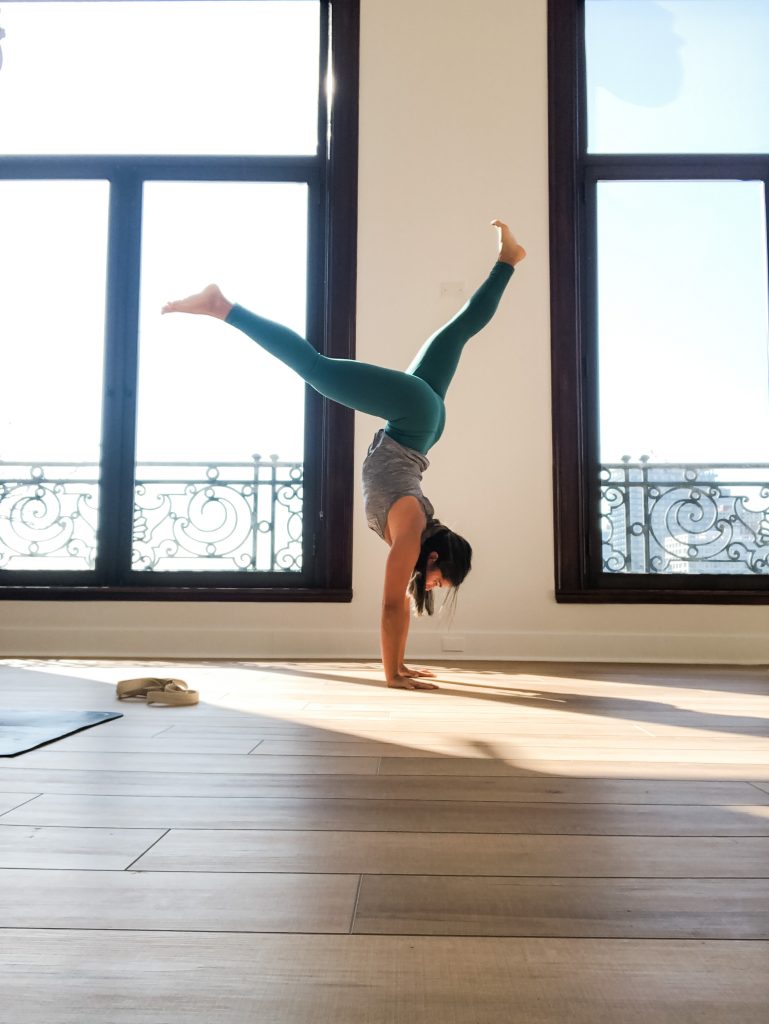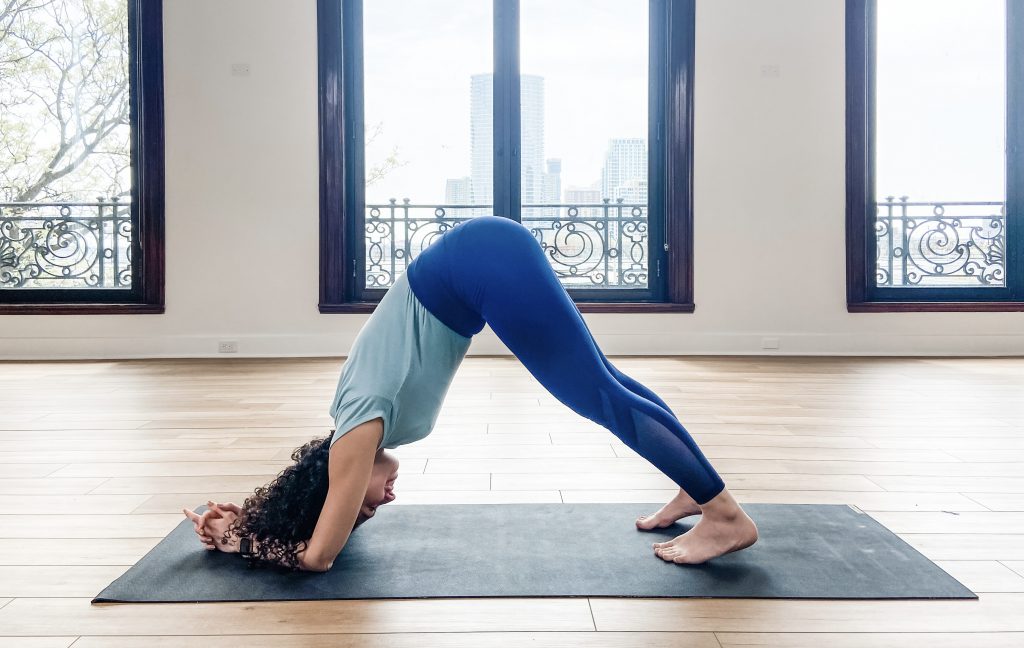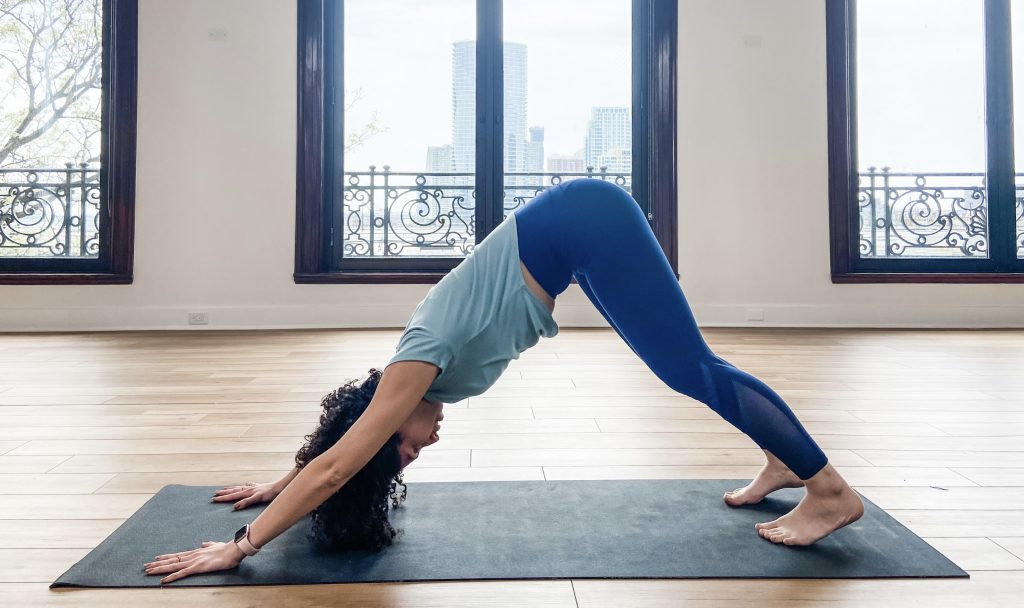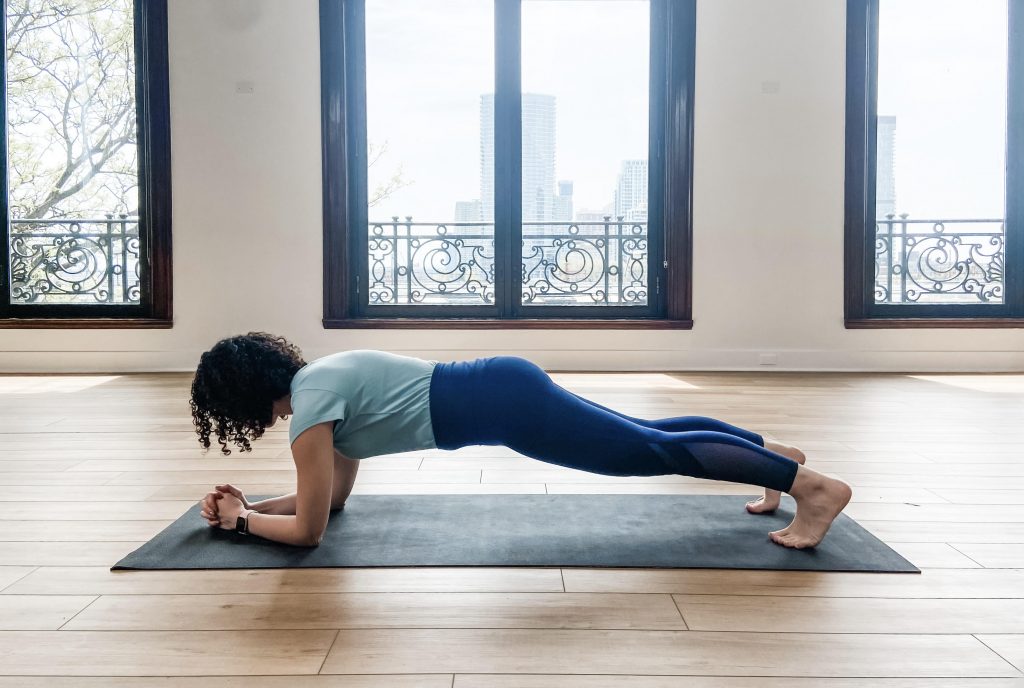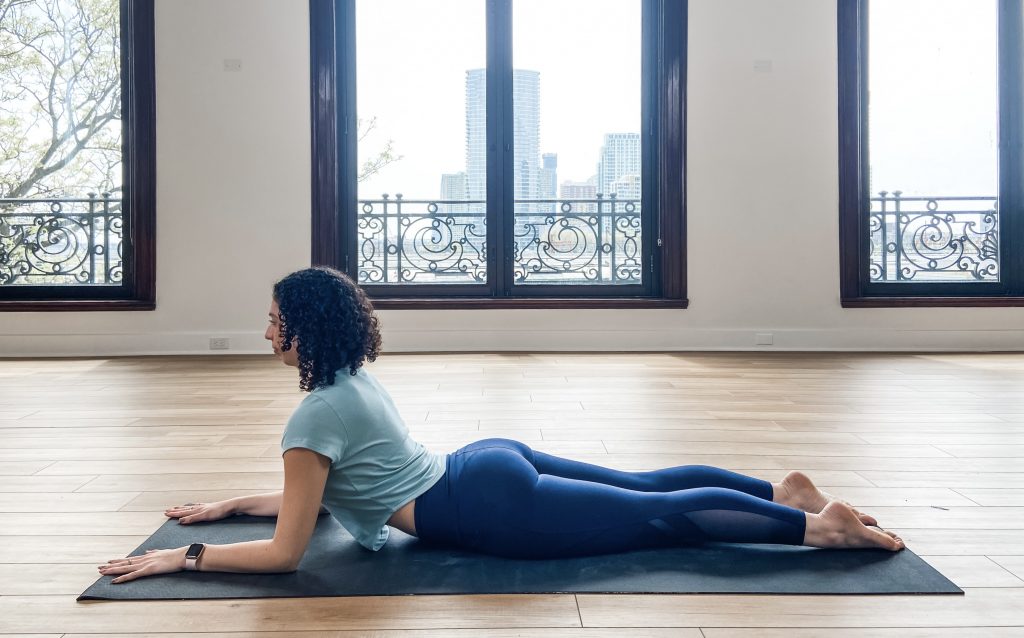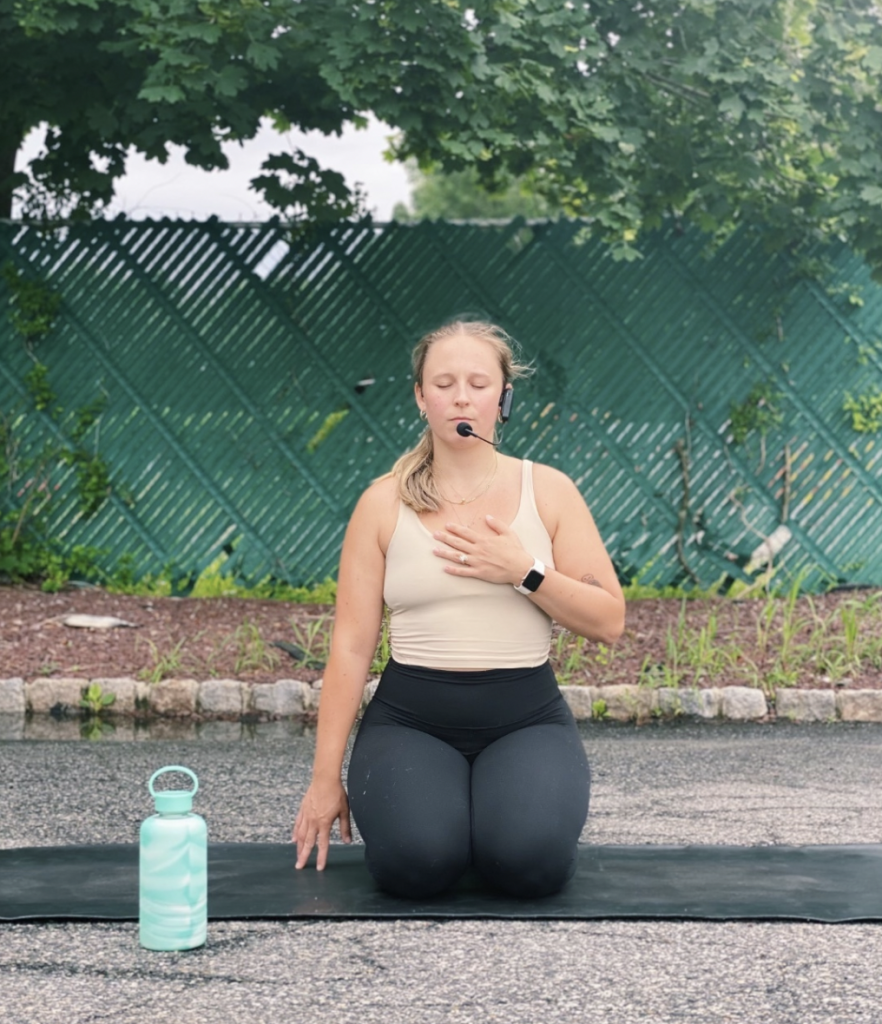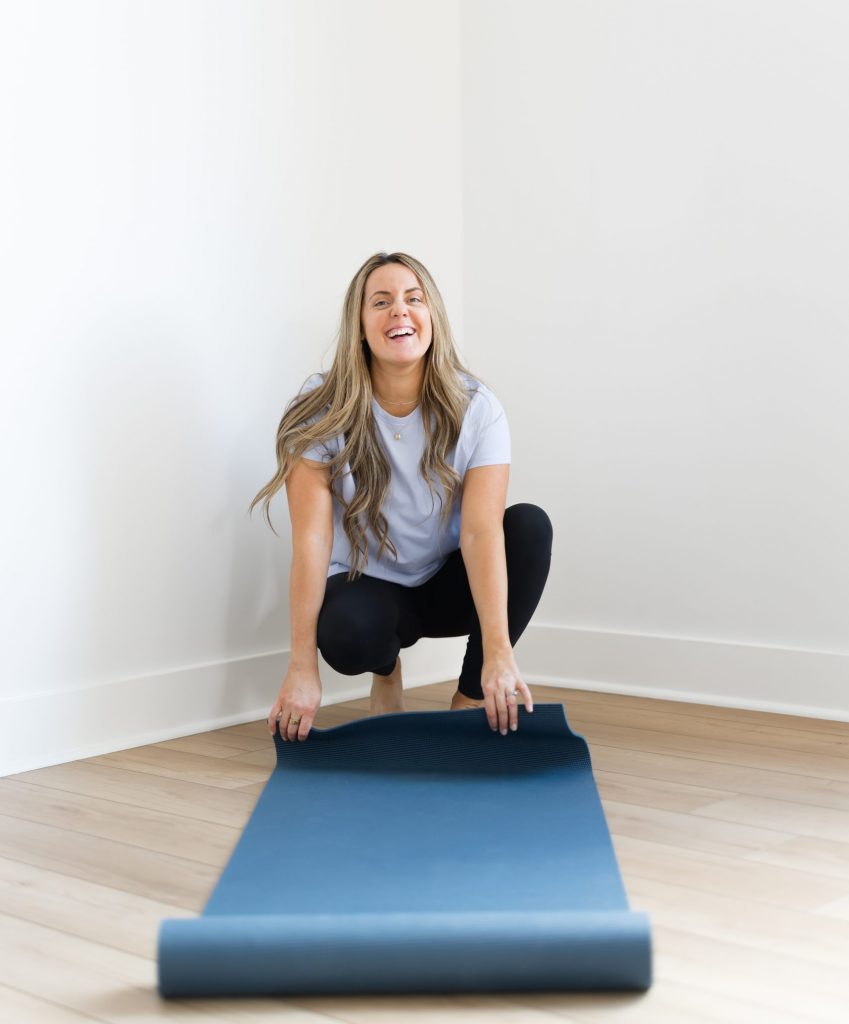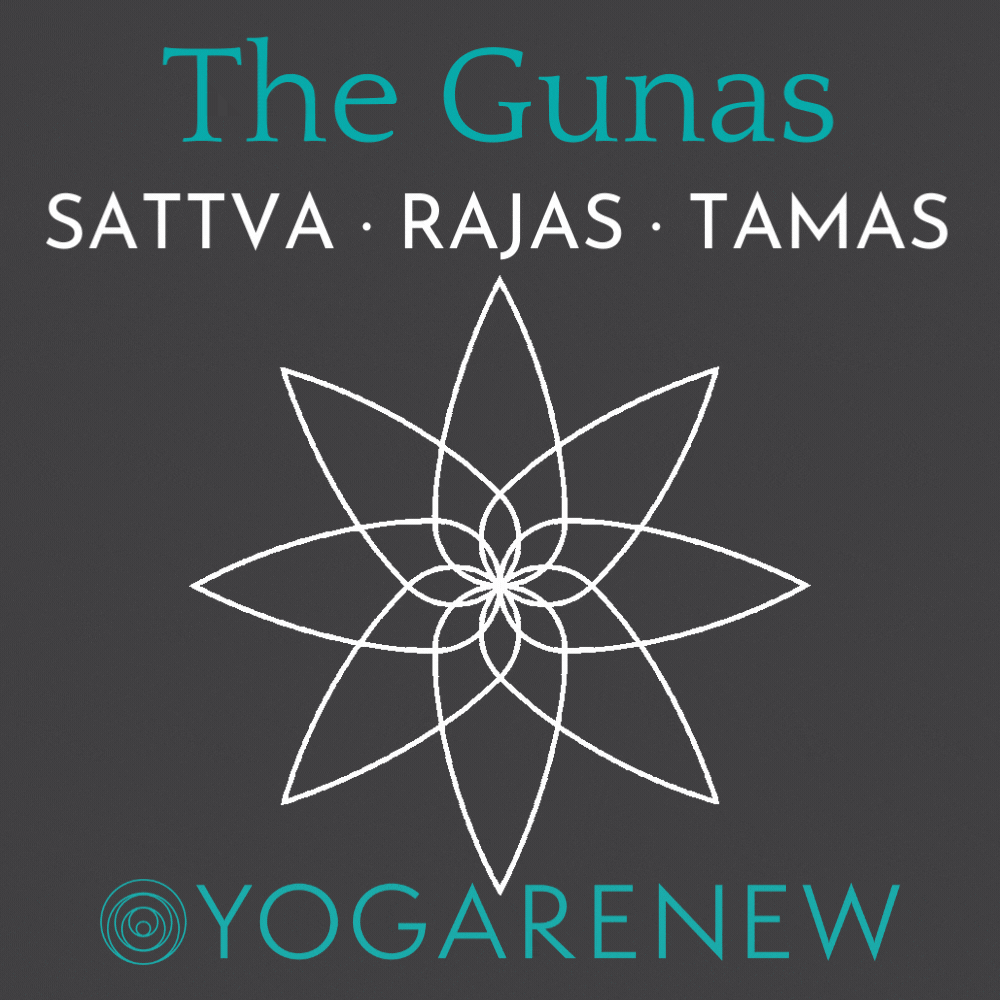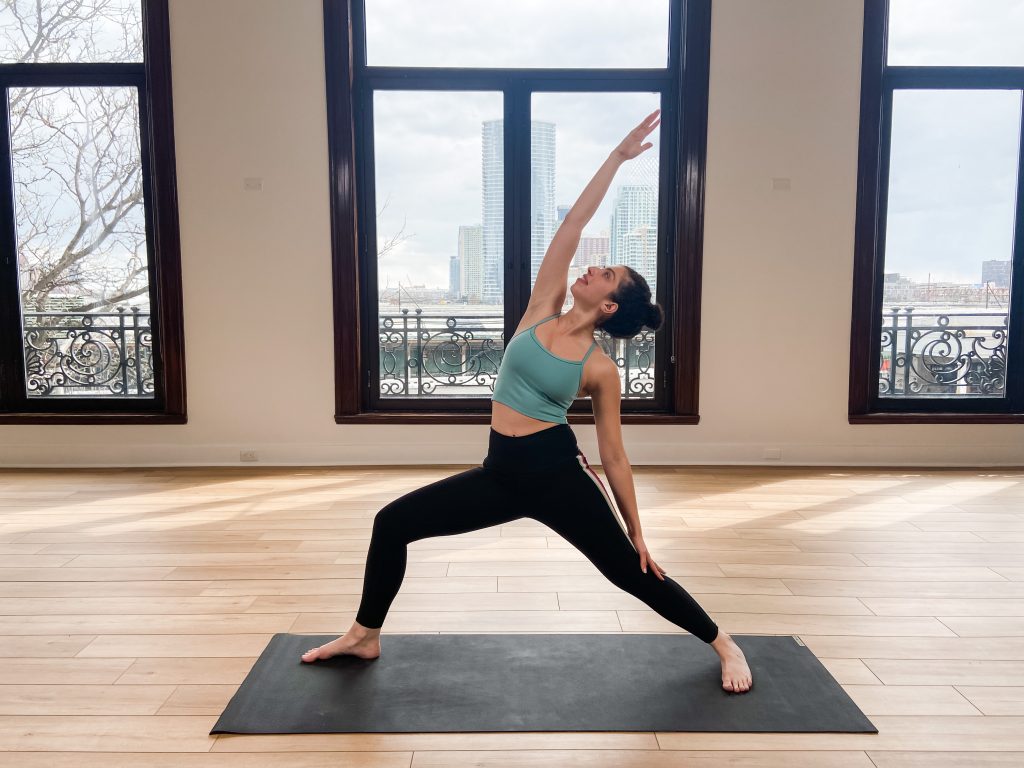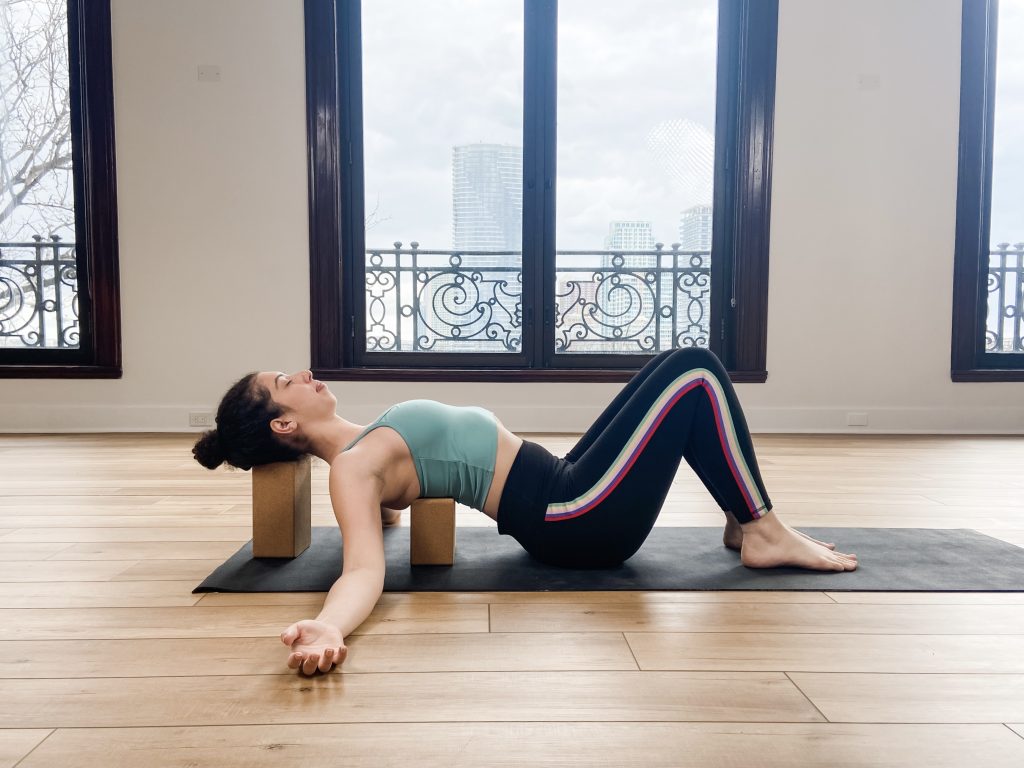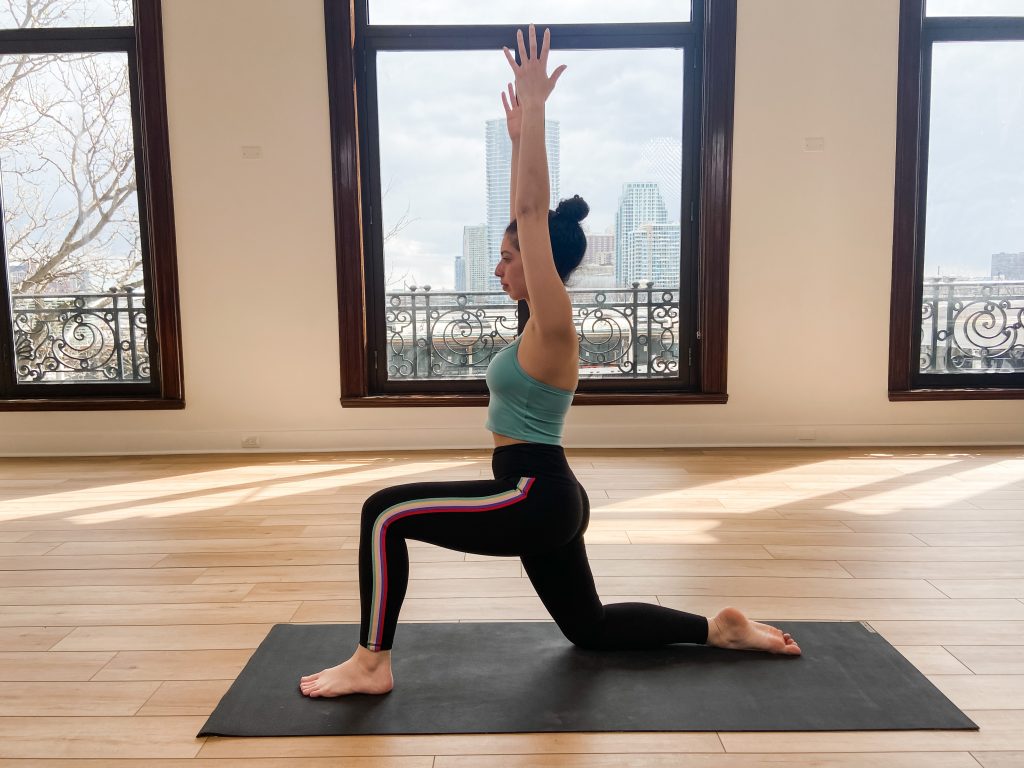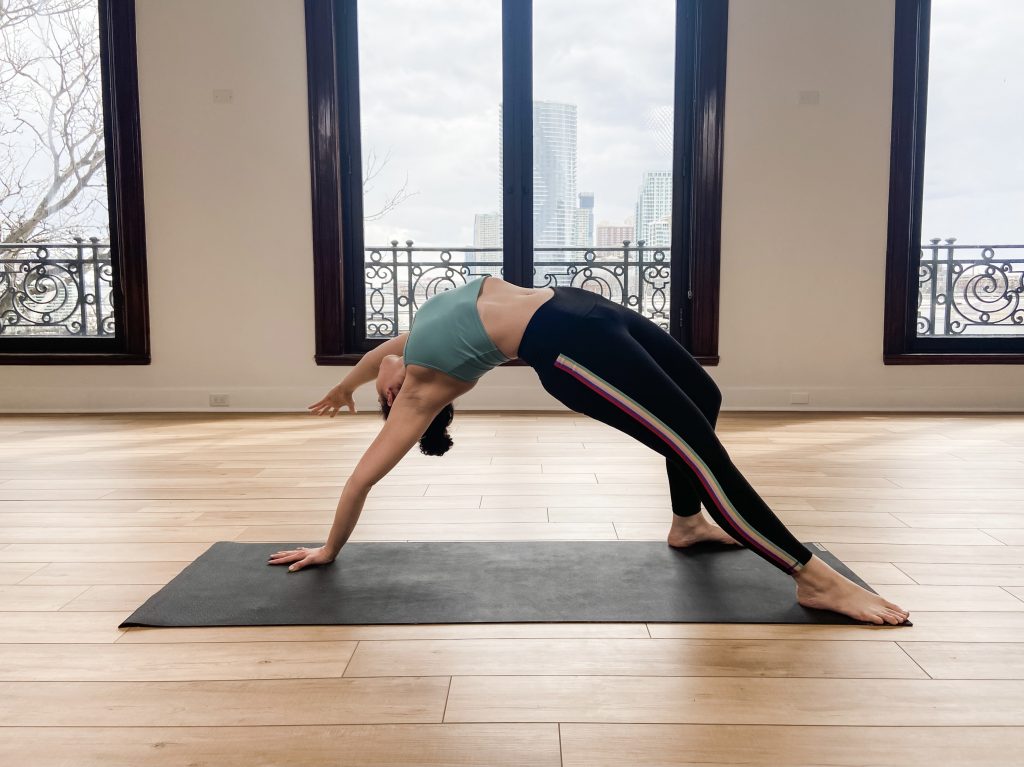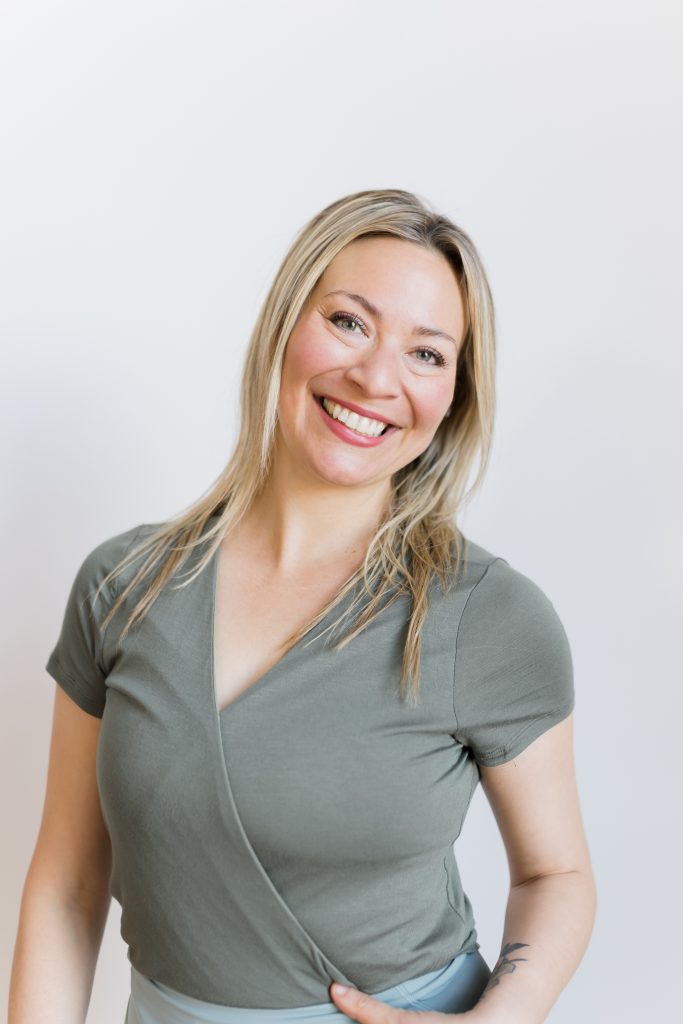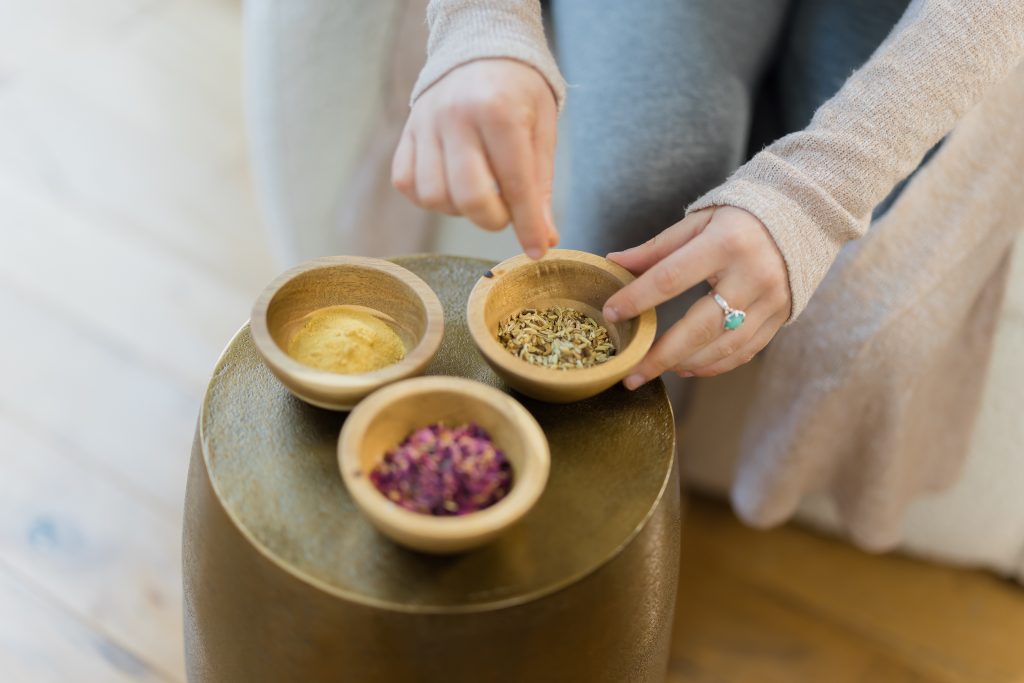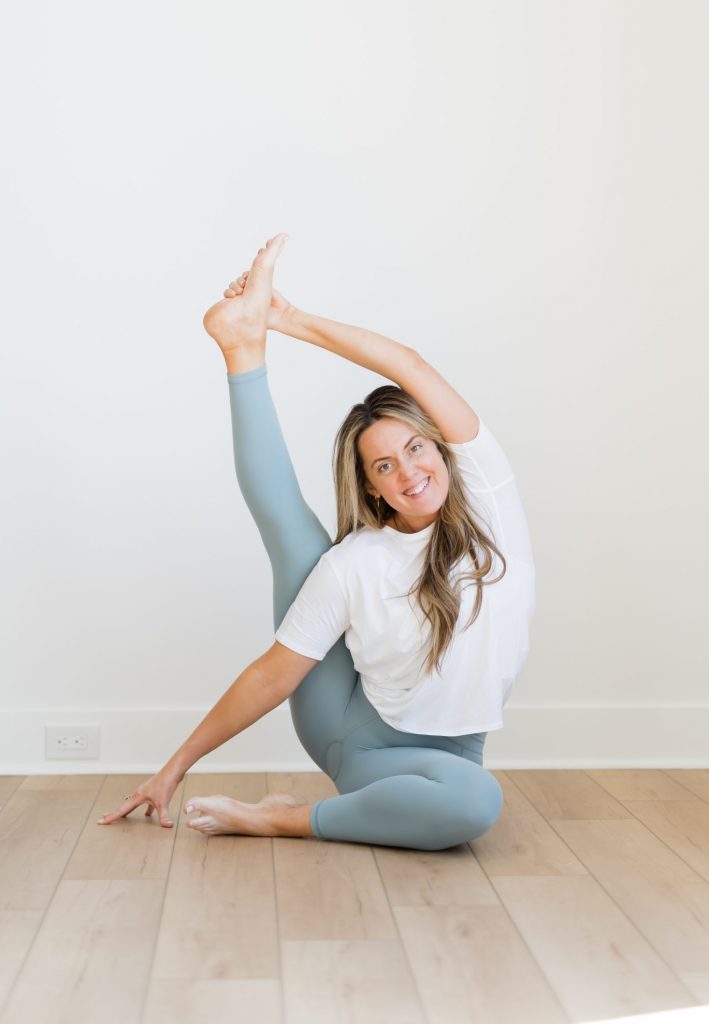
Peak Pose: Compass Pose | Class Theme: Finding Your Path
We believe it’s a significant time to shift your perspective… It may be time to try some new things. If you’ve been feeling stuck, sticky, damp and stagnant from the colder days, now is your chance to blossom like a rich tree or bed of flowers. Maybe the patterns and life choices you’ve been following, without thinking even, are hindering you from where you’re meant to go next. Or, you’ve been doing the work and now it’s time to reap some benefits.
Finding your path isn’t always clear. It also isn’t always and doesn’t have to be pretty. As humans, we each have a unique individual experience that leads us to different places, puts us in different situations, and leads us to different outcomes, some that fulfill our wildest dreams, and some that challenge and change us for the better.
Whatever stage you’re at on your journey, discovering your path is one of the most enlightening things to happen to you…and it may happen when you least expect it.
What is Compass Pose?
While trying to navigate this journey called life, yoga can play a major role in keeping us focused. This week we’ve selected Compass Pose because it is a pose that embodies direction. Compass Pose is very much a pose that resembles a compass, an integral instrument in pointing us in the right direction. With your arm overhead, grabbing your foot, it feels as though your whole body can just naturally navigate you on the right path. Below we’ve listed three other poses to get you prepped for moving into Compass Pose.
Poses that help prep for Compass Pose:
Baddha Konasana
Baddha Konasana, or Bound Angle Pose, is a pose where your hands rest on your ankles as you sit with your legs butterflied.
How to:
- Start in Dandasana with your legs out straight in front of you.
- Take your hands and grab the insides of your knees and left to open them up.
- Bring the soles of your feet together, letting your knees fall towards the floor.
- Use your hands to peel open your feet, trying to aim the soles of your feet towards the sky.
- Breathe here for however many cycles of breath feel good.
Parivrtta Janu Sirsasana
Parivrtta Janu Sirsasana, or Revolved Head-to-Knee Pose, is a pose that is deep in a side body stretch over to one side of the body, grabbing onto your foot with your opposite arm overhead.
How to:
- Start in Dandasana.
- Bend your left knee & open it up to the side. Tuck your left toes towards your right thigh.
- Reach your right arm to your right ankle, as far as it can go where it is comfortable.
- Lift your left arm up overhead and grab onto your ankle, toes, or wherever feels comfortable, making sure your chest stays lifted.
- Gaze up under your left arm to further open up your chest.
- Repeat on the other side.
Parivrtta Agnistambhasana
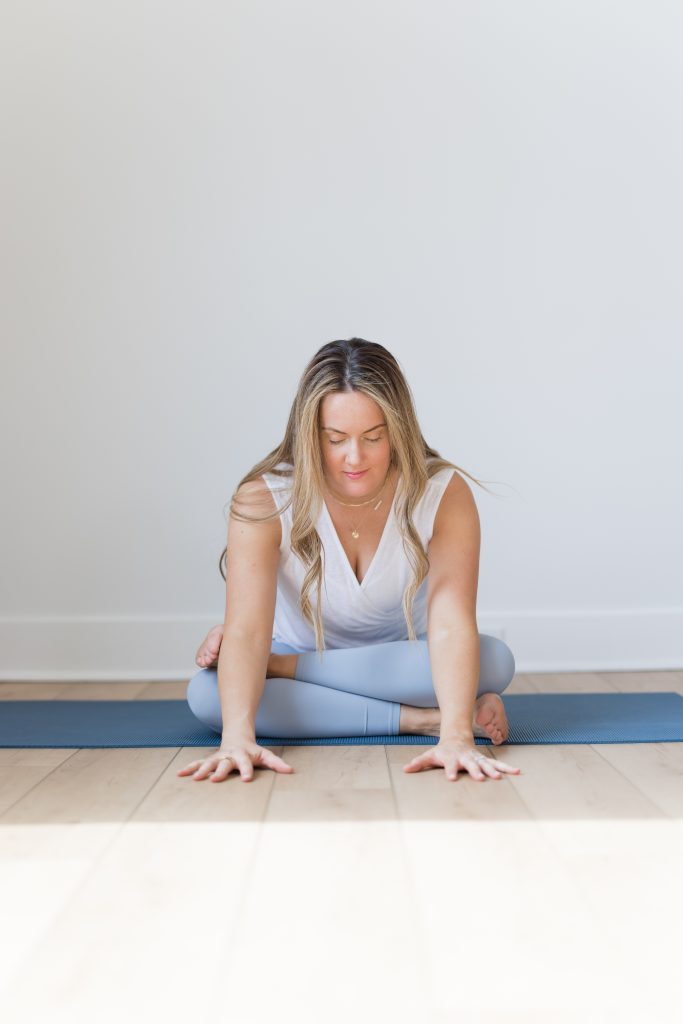
Parivrtta Agnistambhasana, or Fire Log Pose, is a seated pose where the arms are stretched in front of you, palms down with fingers spread while your legs sit stacked on top of one another.
How to:
- Sit on the ground in a comfortable, cross-legged seat with the left shin in front of the right shin.
- Bring your left foot to the ground and bring your right shin parallel to the front of your mat.
- With the left knee staying bent, stack your left ankle to right knee, right ankle to left knee.
- Repeat with the right leg on top, (starting in Sukhasana with the right shin in front).
How to get into Compass Pose:
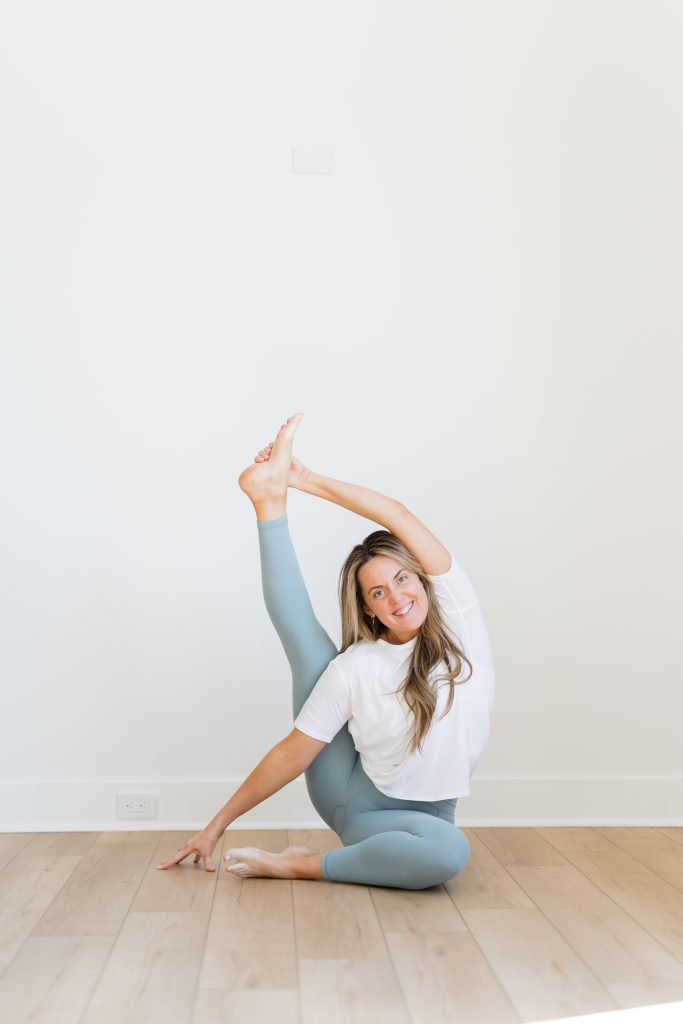
We know, Kate makes Compass Pose look easy and we promise you can get here if you warm up with the poses we mentioned earlier. This pose is pretty advanced, but nothing is out of your reach once you realize you’re on the right path! Surya Yantrasana is the perfect pose to enhance the flexibility in your shoulder, open up your hips and increase your overall flexibility.
How to:
- Begin in a seated, cross legged position
- Draw your right knee into your chest, and cradling your foot and knee, rocking it back and forth to help open the hip
- Grab your right foot with your left hand (or wrap a strap around your foot to create extra space)
- Slip your right arm and shoulder under your right knee, tenting your fingers onto the ground for stability
- Straighten the right leg any amount as you kick your right foot over head, and extend the left arm


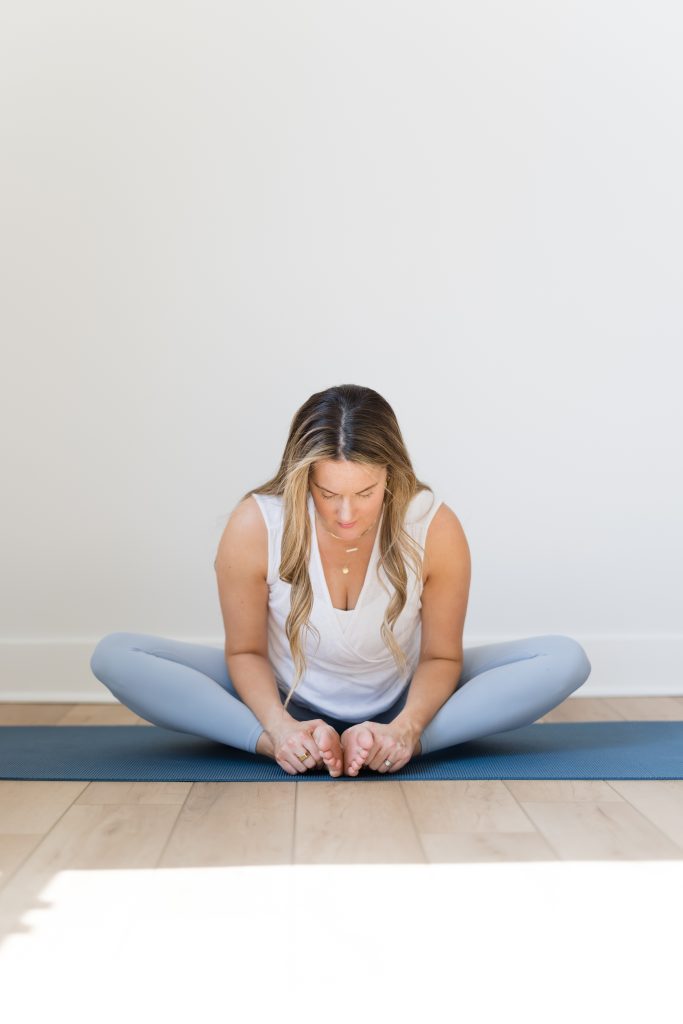
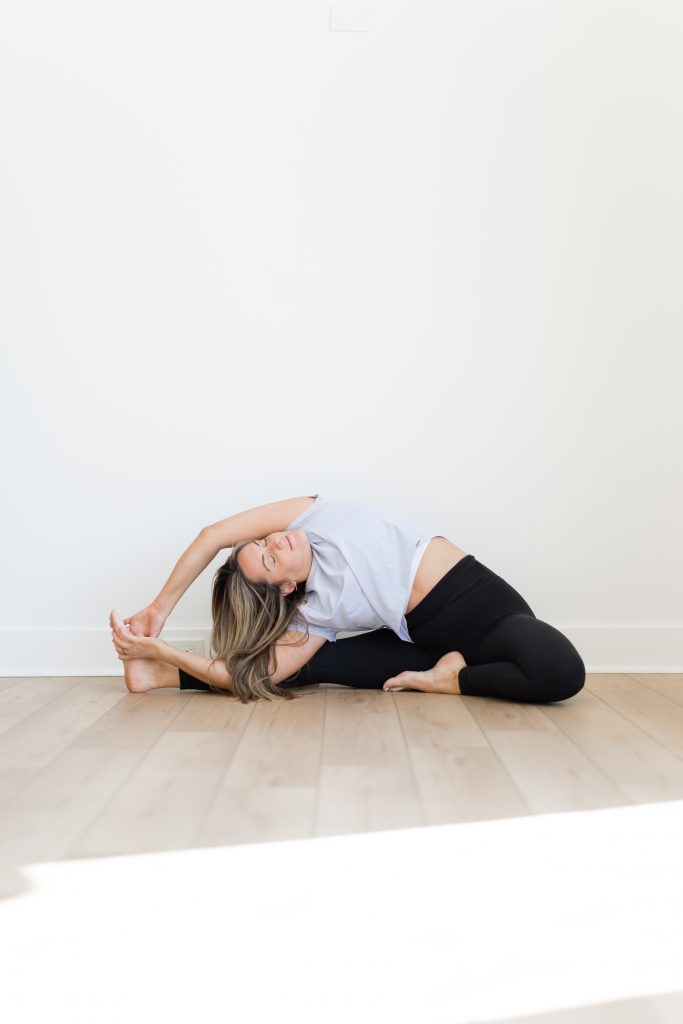
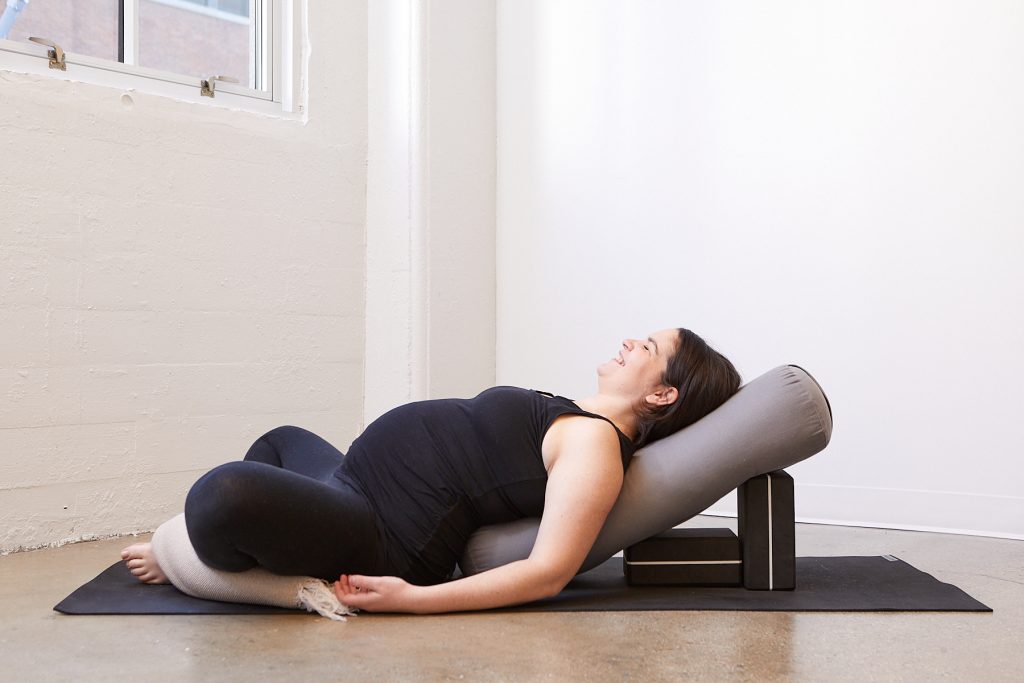
 It is beneficial to distinguish two types of prenatal students: those who have been practicing yoga consistently for a length of time prior to conception, and have continued to practice during their pregnancy, and those who are new to yoga, or are returning to yoga prenatally after a long absence.
It is beneficial to distinguish two types of prenatal students: those who have been practicing yoga consistently for a length of time prior to conception, and have continued to practice during their pregnancy, and those who are new to yoga, or are returning to yoga prenatally after a long absence. Maintaining the aforementioned bend in the knees will greatly enhance mobility and flexibility in your prenatal students. Forward folds, when practiced with proper foot alignment and deeply bent knees, can be safely practiced during pregnancy, creating much needed length in the back of the body. Modified Sun Salutes can be practiced if the feet are in proper alignment and the knees are softened, as can squats, which prepares the legs and pelvic floor for the rigors of childbirth. Keeping the knees bent insures proper blood flow between the lower and upper regions of the body, and lessens the likelihood of sciatic nerve pain or lightheadedness.
Maintaining the aforementioned bend in the knees will greatly enhance mobility and flexibility in your prenatal students. Forward folds, when practiced with proper foot alignment and deeply bent knees, can be safely practiced during pregnancy, creating much needed length in the back of the body. Modified Sun Salutes can be practiced if the feet are in proper alignment and the knees are softened, as can squats, which prepares the legs and pelvic floor for the rigors of childbirth. Keeping the knees bent insures proper blood flow between the lower and upper regions of the body, and lessens the likelihood of sciatic nerve pain or lightheadedness.